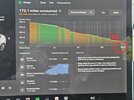Edmonds, who doesn't tend to be pro-Tesla, tested actual range, when driven similarly to the EPA test procedures, against the rated EPA range: Edmunds Tested: Electric Car Range and Consumption | Edmunds And Tesla came out the closest to the EPA range of all of the cars they tested.Is there anyone here that has ever been able to replicate the Tesla quoted range for their Tesla or even gotten close to it?
They haven't tested a 2023, but there is no reason to think that they would perform much different than everything else they tested.
The data for the top, and bottom, 10 stolen from @exxxviii's post in another thread:
| Rank | Vehicle | EPA Range | Edmunds Range | Range Precision |
| 1 | 2021 Tesla Model S Plaid | 348 miles | 345 miles | 0.9% |
| 2 | 2022 Rivian R1T Launch Edition | 314 miles | 317 miles | 1.0% |
| 3 | 2021 Tesla Model 3 Long Range | 353 miles | 345 miles | 2.3% |
| 4 | 2020 Tesla Model S Performance | 326 miles | 318 miles | 2.5% |
| 5 | 2021 Tesla Model Y Long Range | 326 miles | 317 miles | 2.8% |
| 6 | 2022 Lucid Air Dream Range | 520 miles | 505 miles | 2.9% |
| 7 | 2022 Kia EV6 GT-Line dual motor | 274 miles | 283 miles | 3.3% |
| 8 | 2022 Kia EV6 Wind RWD | 310 miles | 323 miles | 4.2% |
| 9 | 2021 Ford Mustang Mach-E GT Performance | 260 miles | 272 miles | 4.6% |
| 10 | 2022 Porsche Taycan GTS | 246 miles | 259 miles | 5.3% |
| 22 | 2021 Volkswagen ID.4 Pro | 260 miles | 288 miles | 10.8% |
| 29 | 2021 Volkswagen ID.4 Pro S dual motor | 240 miles | 272 miles | 13.3% |
| 35 | 2021 Volkswagen ID.4 First Edition | 250 miles | 287 miles | 14.8% |
| 44 | 2020 Hyundai Ioniq Electric | 170 miles | 202 miles | 18.8% |
| 45 | 2020 Kia Niro EV | 239 miles | 285 miles | 19.2% |
| 46 | 2022 Hyundai Kona Electric | 258 miles | 308 miles | 19.4% |
| 47 | 2022 BMW iX xDrive50 (22-in wheels) | 315 miles | 377 miles | 19.7% |
| 48 | 2022 Mercedes-Benz AMG EQS 53 4Matic | 277 miles | 332 miles | 19.9% |
| 49 | 2022 Mercedes-Benz EQS 450+ | 350 miles | 422 miles | 20.6% |
| 50 | 2022 Audi RS e-tron GT | 232 miles | 285 miles | 22.8% |
| 51 | 2022 Porsche Taycan (20-in wheels) | 225 miles | 286 miles | 27.1% |
| 52 | 2020 MINI Cooper SE | 110 miles | 150 miles | 36.4% |
| 53 | 2020 Porsche Taycan 4S (20-in wheels) | 203 miles | 323 miles | 59.1% |



